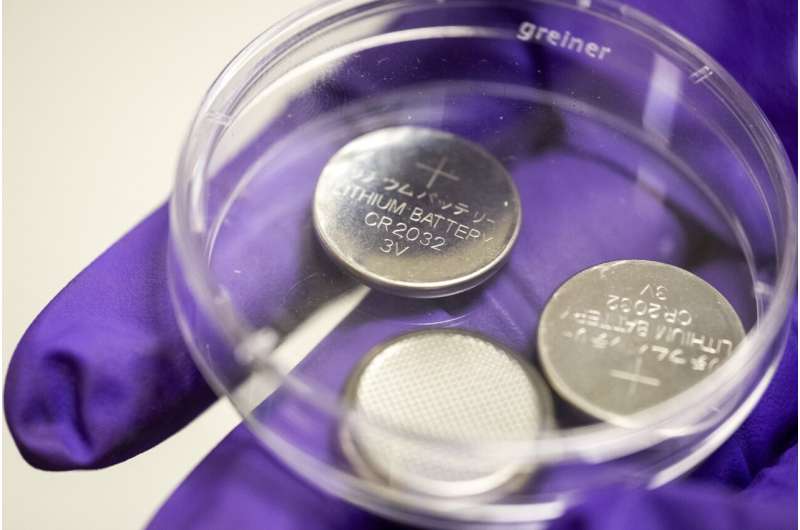Scientists from Nanyang Technological University, Singapore (NTU Singapore) have devised an efficient method of recovering high-purity silicon from expired solar panels to produce lithium-ion batteries that could help meet the increasing global demand to power electric vehicles.
High-purity silicon makes up the majority of solar cells, yet they are typically discarded at the end of their operational lifespan after 25 to 30 years. It is challenging to separate the silicon from other solar cell components such as aluminum, copper, silver, lead, and plastic. Moreover, recycled silicon has impurities and defects, making it unsuitable for other silicon-based technologies.
Existing methods to recover high-purity silicon are energy-intensive and involve highly toxic chemicals, making them expensive and limiting their widespread adoption among recyclers.
The NTU researchers overcame the challenges through a new extraction method using phosphoric acid, a substance commonly used in the food and beverage industry.
The NTU approach demonstrated a higher recovery rate and purity than present silicon recovery technologies. The process is also more efficient, involving just a single reagent (phosphoric acid), whereas conventional methods include at least two types of chemicals (highly acidic and highly alkaline).
Principal investigator of the study, Associate Professor Nripan Mathews, Provost’s Chair in Materials Science and Engineering and Cluster Director of the Energy Research Institute @ NTU (ERI@N), said, “Our approach to silicon recovery is both efficient and effective. We do not have to use multiple chemicals, reducing the time spent on post-treatment of the chemical wastes. At the same time, we achieved a high recovery rate of pure silicon comparable to those produced by energy-intensive extraction techniques.”
While the use of solar renewable energy has climbed over the last few decades, the limited lifespan of 30 years for solar panels means that 78 million tons of solar panels are due to expire by 2050.
The NTU research team believes their silicon recovery method can potentially solve the growing problem of solar panel waste by keeping resources in a loop.
The study is published in the journal Solar Energy Materials and Solar Cells.
Powering the growth of lithium-ion batteries for electric vehicles
Silicon is considered one of the most promising materials for next-generation lithium-ion batteries to power electric vehicles (EVs) due to its ability to deliver extended range and quick charging times.
With carmakers racing to develop silicon-based lithium-ion batteries for advanced EVs, the NTU research team believes their newly developed silicon recovery method can support the expected demand for high-purity silicon.
The NTU approach involves first soaking the expired solar cell in hot diluted phosphoric acid for 30 minutes to remove metals (aluminum and silver) from their surfaces. This process is repeated using fresh phosphoric acid to ensure complete removal of the metals, resulting in pure silicon wafer at the end of another 30 minutes.

The NTU Singapore researchers used the recovered silicon in a lithium-ion battery anode and tested it for efficiency. Results showed that it performed similarly to new, commercially bought silicon. © NTU Singapore
Using advanced spectroscopic analyses to evaluate the elemental content of the recovered wafer, researchers found that their sample achieved a recovery rate of 98.9 percent with a purity of 99.2 percent—comparable results to silicon recovered through currently available methods.
When the recovered silicon was upcycled into a lithium-ion battery anode and tested for efficiency, it performed similarly to new, commercially bought silicon.
Lead author of the study, Dr. Sim Ying, Research Fellow, Energy Research Institute @ NTU, said, “The comparable performance between our upcycled silicon-based lithium-ion battery and the newly purchased ones proves that the NTU approach is feasible. We envision our faster and cheaper silicon recovery method to be a positive boost for the development of EV batteries. Aside from EVs, there are also potential applications such as thermoelectric devices.”
More information:
Ying Sim et al, Simplified silicon recovery from photovoltaic waste enables high performance, sustainable lithium-ion batteries, Solar Energy Materials and Solar Cells (2023). DOI: 10.1016/j.solmat.2023.112394
Provided by
Nanyang Technological University
Citation:
Scientists develop method to recover high-purity silicon from solar panels for upcycling into lithium-ion batteries (2023, September 7)


